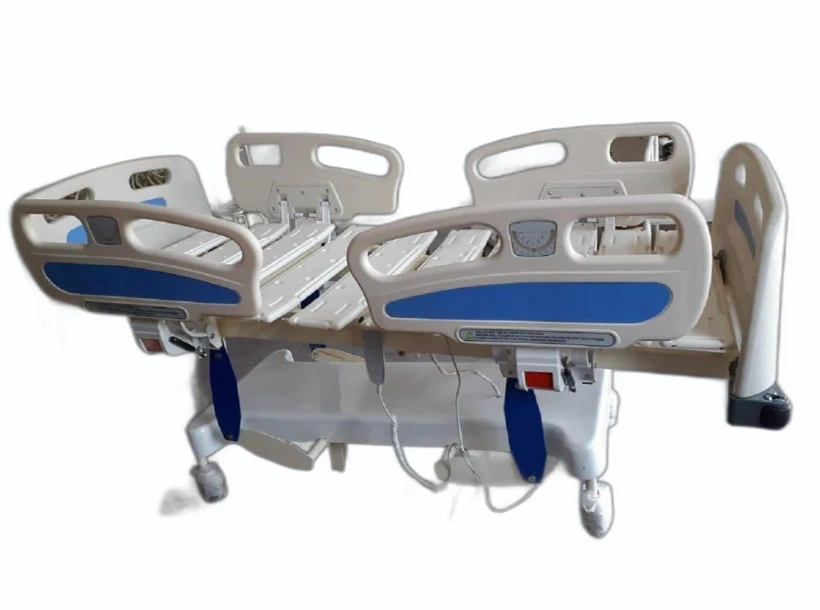How to Streamline Hospital Equipment Procurement Through Online Portals
Currently, hospitals are required to run complex processes and keep up the high quality of patient care. There is great potential to improve how medical equipment is purchased. In the past, hospital procurement depended on paperwork, manual approvals and disconnected communication with suppliers, but now online portals are changing all that.
They do more than help us save time—they also make the procurement process easier, lessen our workload and make things more transparent and manageable. This blog looks at how hospitals can use online systems to make equipment procurement more efficient.
The Challenges of Conventional Procurement
Before, the hospital procurement process was filled with many inefficiencies.
-
It takes a long time to get quotes because the process is still manual.
-
Inconsistent ways of communicating between departments and suppliers.
-
Documents that are stored on paper and need manual approval.
-
Unclear understanding of the costs and results of the supply chain.
-
Problems with redundant orders and managing inventory.
Problems such as these may result in late deliveries, unpredictable prices, missed contracts and shortages of important medical equipment for patients.
What Are Websites for Procurement?
By using online portals, hospitals can take care of procurement activities in one place, using the internet.
-
Check out a wide variety of medical tools and supplies.
-
Check how products, specifications and prices differ in real time.
-
Order items easily using your phone or computer.
-
Watch when your package is being transported and when it is delivered.
-
Link procurement information with both inventory and finance data.
Examples are platforms such as GHX, MediCatalogue and e-procurement features in SAP and Oracle ERP systems.
Key Benefits of Using Online Portals
Single Access to Vendors
Through a single system, hospitals can access a large group of pre-checked suppliers, without having to search for each one individually. This allows team members to easily compare products using price, delivery time and compliance with rules—all in one place.
Live monitoring of prices and cost control
Users can go online to check the latest prices for equipment and consumables from several vendors. Instant comparisons allow hospitals to pick the best options and make better deals. Several platforms let facilities take advantage of group purchasing organization (GPO) contracts to get better pricing on purchases.
Streamlined Workflow and Automation
Through procurement portals, the approval process, budgeting and compliance are all conducted automatically within hospital systems. This saves time by avoiding duplicated paperwork and seeing that all orders follow the hospital’s policies and budget. If a department head needs a new ultrasound machine, the system will send the request to procurement, finance and the executive for approval, all without creating a paper form. Without alerts and reminders, there is a risk of something getting held up.
Enhanced Inventory Management
When procurement portals are linked to inventory systems, hospitals have instant information about their supplies. This way, you won’t purchase too much equipment or find yourself with none. Certain platforms also use data to let users know when to reorder or what to switch to in the event of product shortages.
Minimized Time from Order to Delivery
Automating how hospitals communicate with their vendors and monitoring purchases helps them cut down on how long it takes to make a purchase. Purchase portals are designed with logistics systems, so buyers can follow their orders from the warehouse to the delivery location and plan ahead.
Compliance and Reporting
Many websites are now set up to include compliance features. They guarantee that all their suppliers follow healthcare standards, and they save all transaction information digitally for easy auditing. Teams in procurement can use reports about spending patterns, how vendors perform and the amount of savings over the years, to help with strategic planning.
Implementation Tips for Hospitals
-
Check What You Need and Pick the Right Website: Look for a portal that matches your hospital’s size, variety of medical specialties and how much you buy. Make sure you consider platforms that work with your present ERP or HIS.
-
The procurement portal needs to be understood by staff from procurement, finance, departments and the end users. Onboarding should be done correctly.
-
Ensure all suppliers are checked and trained on the portal before starting to use it. Preferred pricing and delivery terms may be arranged with vendors by certain hospitals through the portal.
-
Count on Data Analytics: Rely on the system’s analytics tools to check how procurement is doing, find ways to cut costs and plan for coming requirements.
-
First, use the system in one or two departments and then extend it to the rest of the hospital. This makes it possible to detect and handle early issues and design the system for those needs.

Final Thoughts
In today’s fast-paced healthcare environment, hospitals must adopt smarter, more efficient ways to manage procurement. Online portals offer a powerful solution—eliminating manual processes, improving communication, and enabling real-time decision-making. From streamlined workflows and automated approvals to enhanced inventory control and compliance reporting, digital procurement systems are transforming how hospitals operate.
To truly unlock these benefits, hospitals need a platform that’s reliable, scalable, and tailored to their needs. EquipMedy stands out as a comprehensive solution for buying and selling medical equipment online. With access to verified suppliers, transparent pricing, and seamless integration with hospital systems, EquipMedy empowers healthcare facilities to save time, reduce costs, and focus on delivering exceptional patient care.
Make the shift today— EquipMedy.com is your partner in smarter hospital procurement.
.png)